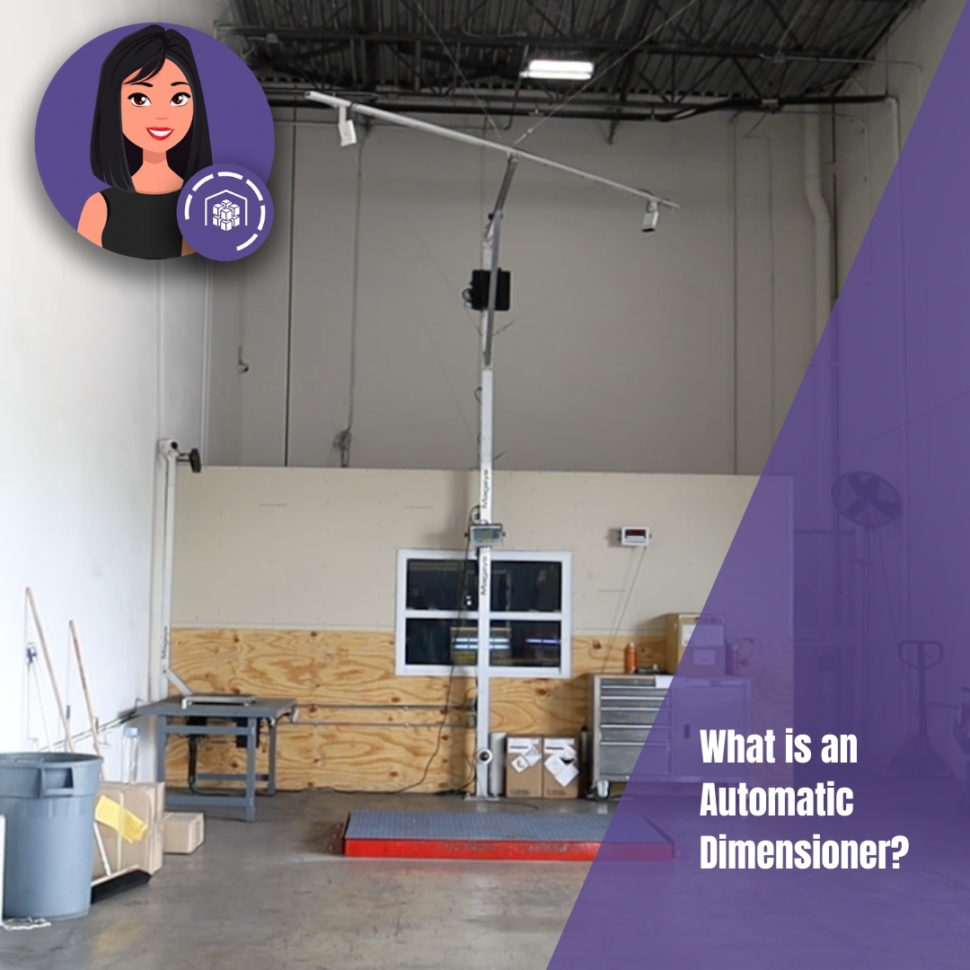A dimensioner, in the context of warehousing, logistics, or shipping, refers to a device that automatically measures the dimensions (length, width, and height) of packages, pallets, or other freight items. This device often utilizes advanced imaging technologies, lasers, or infrared to calculate the dimensions accurately and swiftly.
Dimensioners are key tools in warehouses, distribution centers, and shipping facilities, as they play a vital role in streamlining operations, improving storage efficiency, and determining accurate shipping costs.
Shipping costs are often calculated based on “dimensional weight” or “volumetric weight,” which takes into account both the size and weight of a package. Inaccuracies in these measurements can lead to incorrect shipping charges and disputes with logistics providers. Therefore, a dimensioner is used to prevent these issues by providing accurate, automated measurements.
Moreover, in a warehouse setting, the data gathered by a dimensioner helps in optimizing space, planning the layout, and managing inventory more effectively. It also contributes to faster processing times, enhancing overall operational efficiency.
Can logistic and warehouse company benefit from a dimensioner?
Absolutely! Logistics and warehouse companies can greatly benefit from the use of a dimensioner. Here’s how:
1. Increased Accuracy: Dimensioners provide precise measurements of package dimensions, which can reduce discrepancies and disputes over shipping costs. It ensures that you’re neither overcharging nor undercharging your customers based on inaccurate measurements.
2. Enhanced Efficiency: The use of dimensioners can significantly speed up the process of measuring package sizes, making the operations more efficient. This is particularly beneficial in a high-volume warehouse or logistics company, where manually measuring packages can be time-consuming and prone to errors.
3. Space Optimization: With precise measurements from a dimensioner, warehouse companies can better optimize their storage space. Knowing the exact size of packages allows for improved warehouse layout planning and better utilization of storage space.
4. Cost Savings: By automating the measurement process, a dimensioner can reduce labor costs. Plus, accurate dimension data can help avoid unnecessary shipping charges and can assist in better freight load planning, leading to additional savings.
5. Data Collection and Analysis: Dimensioners can automatically collect and store data about package sizes, which can be used for tracking and analysis purposes. This data can help logistics and warehouse companies make informed decisions about operations, planning, and strategy.
6. Better Load Planning: In logistics, understanding the precise dimensions of packages helps in effective planning for freight loading and transportation. It can maximize the utilization of cargo space, leading to more efficient transport operations.
In summary, a dimensioner can be a valuable asset for a logistics or warehouse company, potentially leading to significant improvements in efficiency, accuracy, and cost-effectiveness. However, as with any investment, companies should consider their specific operational needs, volume of packages, and existing inefficiencies to determine the potential return on investment from a dimensioner.
Will a dimensioner work with IMS System?
Yes, a dimensioner can typically be integrated with an Inventory Management System (IMS). This integration can provide numerous benefits to a business.
A dimensioner captures and provides accurate data about the dimensions and weight of an item. When this data is integrated into an IMS, it can lead to more accurate inventory records and improved space utilization. Precise measurements from a dimensioner can help optimize the allocation of storage space, reducing wasted space and potentially increasing the capacity of a warehouse.
Moreover, having accurate dimension data in the IMS can also improve picking and packing processes. Warehouse workers can be directed to the exact location of an item and can make better decisions about packing based on the size and shape of an item.
Another benefit of integrating a dimensioner with an IMS is improved shipping cost calculations. Many carriers use dimensional weight pricing, which takes into account both the weight and size of a package. Accurate data from a dimensioner can be used to calculate these costs more accurately, avoiding unexpected shipping costs.
However, the ease and effectiveness of integrating a dimensioner with an IMS can depend on the specific systems and technologies you’re using. It’s always a good idea to consult with your system providers or a knowledgeable IT professional to ensure a smooth integration process.
Simply long story short
The logistics and warehousing sectors stand at the intersection of commerce, technology, and efficiency, continually seeking the next frontier of innovation that can offer substantial enhancements in operations. A dimensioner, in this context, is not merely an instrument for measuring package dimensions; it’s a transformative tool, a linchpin of precision, productivity, and profitability.
With its ability to accurately measure the size and weight of packages, a dimensioner simplifies several essential operations — from inventory management and space optimization to precise shipping cost calculation. When integrated with systems like the Inventory Management System, it also serves as a dynamic data repository, driving data-based decision-making and predictive analysis.
In an era where agility and accuracy are not just desired but demanded, a dimensioner serves as an essential tool, lending a competitive edge to logistics and warehouse companies. Investing in a dimensioner is not just about buying a piece of equipment; it’s about embracing a more efficient, effective, and economic way of managing logistics and warehouse operations.
As we step further into the future, the role of tools like dimensioners will only expand, shaping new paradigms in the warehousing and logistics industry. Embracing such advancements today prepares businesses for the challenges of tomorrow, enabling them to navigate the complex world of logistics with greater confidence and competence.



